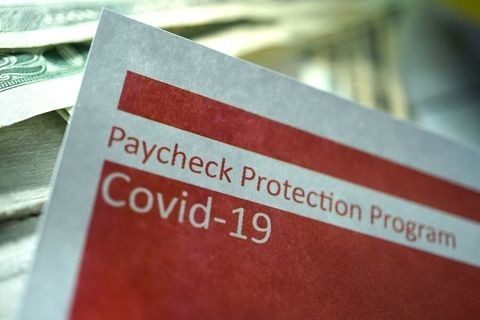White Collar – Corporate Monitors: Peace, at What Cost?
Publication | 01.09.18
[ARTICLE PDF]
 The use of independent compliance monitors in U.S. Department of Justice resolutions has grown so common that they are now almost a given in the department’s disposition of corporate criminal and regulatory enforcement actions. But as experience with monitorships has grown, it has become increasingly clear that they can sometimes create serious problems for the companies they are intended to help.
The use of independent compliance monitors in U.S. Department of Justice resolutions has grown so common that they are now almost a given in the department’s disposition of corporate criminal and regulatory enforcement actions. But as experience with monitorships has grown, it has become increasingly clear that they can sometimes create serious problems for the companies they are intended to help.
Ideally, a monitor is “an honest broker who assesses whether the company is living up to the specific commitments it has made,” says Philip Inglima, a partner in Crowell & Moring’s White Collar & Regulatory Enforcement Group and chair of the firm’s management board. The monitor’s role is not to punish the company in question but rather to help it improve its compliance programs in order to avoid problems in the future. “A monitorship can be an effective tool for a company to achieve remediation, because it forces the C-suite to listen to an independent authority who has a perspective on how to steer clear of violations,” he says. “A monitorship can give the government a lot of leverage with a board of directors and executive management to move the needle and achieve real, lasting reform and compliance.”
In practice, however, monitorships don’t always work as intended, frequently carrying prohibitively high price tags. Monitors are usually lawyers—typically, former prosecutors—who are well equipped to investigate compliance issues. However, the monitor’s investigation and recommendations need to take into account the context of the company’s operations, industry, and competitors—areas where his or her legal expertise may not be sufficient. Thus, monitors typically need to bring on board consultants and advisors with the right business-specific expertise to help advise them, thereby driving up costs.
Monitors are usually given fairly broad authority to oversee corporate compliance efforts. Charged by DOJ with ensuring that the company does not run into trouble again, many tend to cast a wide net. “There is an incentive to leave nothing undone—to gold plate almost every level of the compliance effort,” says Inglima. “And gold is not inexpensive.”
That mindset can lead monitors to look not just for deficient compliance practices, but any practices that can be improved at all. The effort to create the “perfect” approach to compliance and eliminate virtually all risk of violation tends to expand the scope of their work. While corporate executives often need to weigh compliance investments against risk in light of overall economic and competitive factors, says Inglima, “the monitor isn’t obligated to make that balance and harmonize the real world with the ideal world. That can result in ambitions that are completely divorced from a commercially viable rationale.”
At the same time, there are usually few controls placed on the monitor or the costs he or she accrues. “The monitor becomes the 800-pound gorilla in the room as soon as he or
she is appointed,” says Inglima. “And the goodwill and discretion of the monitor dictates the vast majority of what happens from that point forward.” For companies that find themselves incurring huge costs due to the monitor’s activities and recommendations, “there is very little recourse or ability to push back on the monthly run rate.”
The expenses associated with monitors have crept up to the point where they now can have a significant impact on a company’s bottom line. “It’s becoming the new normal for the costs to run well north of $30 million to $50 million over the course of three years,” says Inglima. And federal authorities are not the only ones employing this model. Under one recent agreement set up under New York State enforcement authority, a company spent more than $130 million on monitor-related costs. Such costs, says Inglima, “can dissipate resources that ideally would be available to sustain long-term compliance programs.”

|
"The monitor isn’t obligated to make that balance and harmonize the real world with the ideal world. That can result in ambitions that are completely divorced from a commercially viable rationale." |
PUSHING BACK ON THE AGREEMENT
Faced with such potential risks, companies facing the imposition of a monitor should take action up front. As an agreement is being hammered out, counsel “should negotiate hard to place some limits in the monitor’s appointment documents,” says Inglima. Typically, companies have little leverage and great eagerness for a quick deal with DOJ at this stage, largely because boards and executives are under market and shareholder pressure to resolve such matters quickly. But the rising stakes that come with monitorships now make it critically important to create leverage and breathing room in these defining deal documents.
In negotiations, companies can draw on two department memos that address monitorships. The first—the Morford Memo—states that the financial impact associated with the monitor should be calibrated to the egregiousness of the underlying misconduct. “If it’s heinous conduct, you’re going to have to give a lot more authority to the monitor,” says Inglima. “But very often, you have more localized conduct in a specific division or conduct associated with just a few individuals who have been banished from the company. In those cases, it may be that the monitorship should be focused just on auditing compliance efforts.” In other words, the Morford Memo supports proportional limitations on a monitorship.
DOJ’s Grindler Memo in 2010 added a specific expectation that although the monitor is independent, DOJ can be an arbiter of disagreements that emerge between the monitor and the company. “Under this principle, DOJ specifically anticipates that on at least an annual basis, the company will be conferring with DOJ and the monitor about the monitor’s work,” says Inglima.
These memos open the door to discussions about how the monitoring arrangement will be set up. “They provide a basis for shaping the agreement so that you don’t later have an unchecked mandate for the monitor and runaway financial cost or scope issues,” says Inglima. Companies might ask to have projections of expected costs, for example, or a definition of the progress that would trigger an early termination of the agreement. The company may not get exactly what it wants in these negotiations. But, says Inglima, “through this process, you’re getting DOJ to have eyes on those issues at the very beginning of the relationship. Later, if the company is challenging the amount of spend or the expansion of inquiry by the monitor, there is some collective memory that this function has to be reined in at some point.”
Meanwhile, companies are well advised to get out in front of the problem by aggressively undertaking their own remedial actions while the DOJ investigation is still underway. “These investigations are often long, slow burns,” says Inglima. “That gives the company time to bring in its own change agent, the internal equivalent of a monitor, and begin embracing her findings and implementing solutions before DOJ has brought the hammer down in terms of what the final deal will be.” The idea is to show substantial progress in making improvement and a commitment to the required investment prior to the DOJ disposition—which ideally will be factored into a more limited monitoring arrangement.
Overall, Inglima says, these types of early, up-front actions can position the company to “avoid working with a monitor who has carte blanche. Companies can preemptively establish some practical limitations to help ensure the monitors do not throttle the very businesses they are meant to support.”
THE ULTIMATE “PARALLEL PROCEEDINGS”When DOJ conducts a white collar investigation, it expects and often rewards admissions and cooperation from the company being investigated. But for the vast number of companies doing business internationally, that cooperation can quickly get complicated. Withthevaryinglegalregimesinvolvedin international business today, conduct that constitutes fraud in the U.S., for example, might simply be a regulatory infraction under other nations’ laws. While DOJ and enforcement agencies in other countries often coordinate their efforts in pursuing fraud cases that cross borders, they are typically on separate tracks and subject to disparate timing and form of resolution. As a result, says Crowell & Moring’s Philip Inglima, “a multinational probe can present the ultimate ‘parallel proceedings’ challenge for corporations.” For example, a company resolving a DOJ investigation will need to pledge disclosures and cooperation to lessen its potential impact. However, says Inglima, “coming clean and making peace in that one venue creates an inevitable floor of fact-finding and admissions that it can be difficult to get below again.” Since it is virtually impossible to resolve a complex issue simultaneously across borders, the “floor” established in the U.S. can eliminate defense arguments that would otherwise be viable elsewhere, because “DOJ routinely requires settling companies not to contradict factual admissions made to them anywhere else.” Moreover, cooperation with DOJ can implicate sensitive data privacy or confidentiality standards of other countries where the company does business, creating trip wires in the ongoing U.S. probe. Overall, says Inglima, “It can be very challenging strategically to decide the timing and the extent of admission to provide in each jurisdiction. Company counsel need to look far down the road in assessing what the liability triggers will be in other enforcement venues.” In short, while peace with U.S. prosecutors may be the company’s immediate priority, it must be balanced with a full appreciation for the consequences it will present in other nations’ enforcement arenas, and maximum coordination of resolution timing and obligations should be pursued. |
PDF Download
Web Flip Book
Click to access the flipbook.
- "Data, Data Everywhere – Positioning Your Company to Survive and Thrive in the Data Revolution." — Cheryl Falvey, Paul Rosen, Cari Stinebower, Ryan Tisch, and Kent Goss.
- "Antitrust – Main Street vs. Wall Street: Plaintiffs' Bar Continues To Come After Large Banks." — Juan Arteaga.
- "Environmental – Regulatory Rollback—And Pushback." — Kirsten Nathanson.
- "Government Contracts – Contractors: Getting Their Due." — Stephen McBrady.
- "Jurisdictional Analysis – Time to Trial, Favorable Courts & Other Litigation Trends." — Keith Harrison.
- "Intellectual Property – TC Heartland Reshapes the Patent Litigation Landscape." — Jim Stronski.
- "Labor and Employment – Pay Equity: The Shifting Landscape." — Trina Fairley Barlow.
- "Torts/Products – The New State Lottery: Litigation Rather Than Regulation." — Rick Wallace.
- "White Collar – Corporate Monitors: Peace, at What Cost?" — Philip Inglima.
- "E-Discovery – What is 'Proportional' in the Era of Expanding Data?" — Mike Lieberman.
- "Arbitration – Unlocking the Promise of Arbitration." — Aryeh Portnoy.
- "Health Care – FCA Enforcement: Different, But Still Here." — Laura Cordova.
- "IP: Copyright – 3D Printing Complicates Copyright." — Valerie Goo.
- "Tax – What Congress Giveth, the IRS Taketh Away." — Dwight Mersereau.
Contacts
Insights
Publication | 03.31.25
Health System Settles FCA Case Over PPP Loan 03.31.25 Report on Medicare Compliance
Publication | 03.24.25



